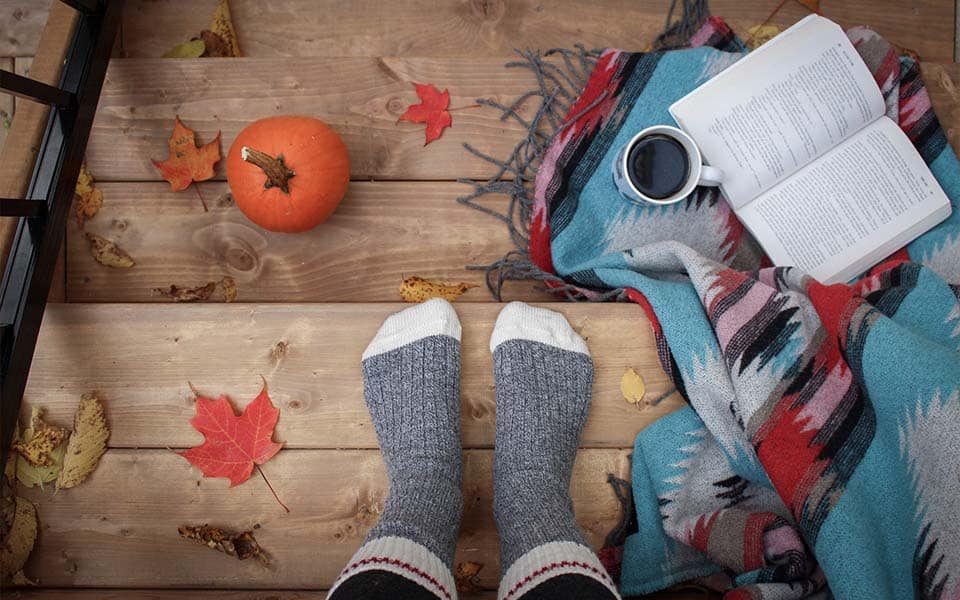Shopping for socks should be a fairly straightforward process. However, there are many nuances to consider, especially if you want a pair that feels comfortable and can handle regular wear and tear.

Before picking up your next pair, take a moment to think about the following:
Materials matter
When comparing across brands, you’ll find that the material runs the gamut from natural and animal fibers like cotton and merino wool all the way to synthetic fibers like polyester, nylon, and modal. Material directly impacts comfort, durability, and price.
Here’s how a few different materials compare:
- Cotton: This will be found in most mass-produced socks from household names like Hanes, Fruit of the Loom, etc. Cotton is affordable and breathable, making it always a reliable pick for your daily casual wear. Where cotton comes up short is during the winter months as it doesn’t retain heat like other fibers. Cotton absorbs moisture, which could cause blisters if worn during athletic activities.
- Merino Wool: For quality socks, there is none better than merino wool. Sourced from the merino sheep, this fiber has many advantages over other fabrics, including it being breathable, moisture-wicking, and odor resistant. You’ll find this particularly common in both hiking and dress socks.
- Synthetic Fibers: From polyester to a micro modal fabric, synthetic fibers are by far the most common in socks. These fibers are durable, moisture-wicking, and inexpensive. Their downfall is that they can lose their shape easily, they are uncomfortable, and they are bad for the environment. Spandex is always added to help the socks stay up.
As you shop for socks, you’ll rarely ever find one that is made from a single material like cotton or merino wool. Instead, a blend of materials is used to provide structure, support, and elasticity to the sock.
However, as you shop for socks, it is best to find one that skews more for a natural fiber like merino wool or cotton, especially if worn for daily wear. For athletic socks, blends of synthetic fibers are commonly used as they will withstand rigorous activity. You can find additional info about socks at Beneath the Knees if you want to learn more.
Sock and shoe sizes aren’t standardized
Sock companies rarely follow shoe sizes when making their socks. Instead, just offer a generic regular, large, extra-large, etc. Furthermore, sizes may overlap. For example, Hanes size regular and extended both fit shoe size 12. So, which should you go with?
Always opt for the smaller sock size, as this will prevent them from bunching up in your shoe.
Also worth noting is that many modern brands like Feetures, Bombas, and Smartwool have narrower ranges which provide a more accurate fit. Many folks find this to be quite more comfortable than the traditional sizing.
What about your choice of footwear?
Sometimes the footwear dictates the style more than the outfit. For example, Air Jordans are best worn with crew socks, even though an ankle or quarter may be more appropriate. If in doubt, check out either the brand’s website or pull up Instagram and search a few relevant hashtags for inspiration.
How about the outfit you are planning to wear with your socks
Socks are one of the items in the wardrobe that, when worn incorrectly, draw attention and can be distracting. Here’s how you can find the right combo to always look your best:
- Formal or professional wear: Whether attending a wedding, professional event, or simply going to work, wear dress socks rather than casual socks as they present much better. For color, match the socks to the pants, not the shoes, as this will prevent the dreaded elongated boot effect. If the dress socks have patterns, then your pants should be plain. Vice versa, if the dress socks are plain, then your pants can have patterns. Mid-calf and over-the-calf socks should only be considered.
- Casual summer wear: With shorts, go with no-show socks. They allow the visual line to be uninterrupted between your shoes and the bottom of the shorts. Never skip wearing socks, even if they are worn with boat shoes, espadrilles, loafers, or casual sneakers, as they keep your feet dry, reduce odor, and prevent you from ruining the shoes. Plus, the socks reduce friction between your feet and the shoes, which can cause blisters.
- Casual denim or chinos: Crew and ankle socks work best here as they are comfortable and versatile and can be worn with just about any shoe in your wardrobe. The one thing to be mindful of is when sitting. If you cross your legs, your lower shin may be exposed. Crew socks will cover this, but ankle socks may not.
- Winter: Thicker merino wool socks will keep your feet warm and dry. Pairing them with snow, hiking, or even Chukka boots is a solid choice.